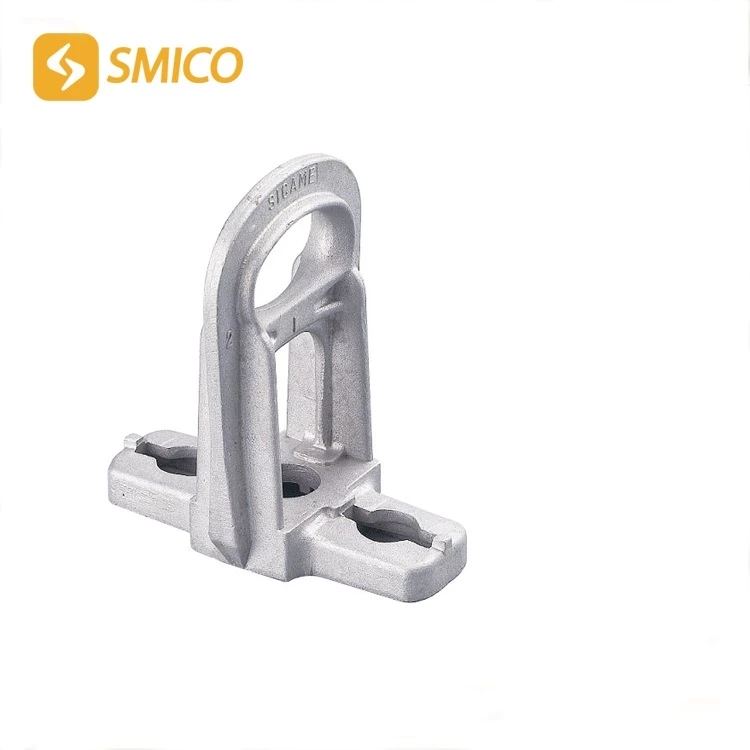A Review Of The Structural Classification Of Tension Clamps
Common types of Anchor Bracket include bolted tension clamps, wedge-shaped tension clamps, bolted compression tension clamps, and compression tension clamps.
1. Tension clamps that are not conductors.
In power transmission and distribution lines, the tension clamp bears the tension of the conductor or ground wire, so the tension of the conductor or ground wire should not be less than 95% of the rated breaking force of the conductor or ground wire, so as to ensure the safety of the line. However, this type of tension clamp is not a conductor, so the electrical performance requirements are relatively low.
Moreover, this type of tension clamp can be disassembled and reused after installation. It is a live wire clamp, which is relatively simple in maintenance and replacement. This type of clamp is mostly bolt-type and wedge-shaped tension clamps.
2. Tension clamps as conductors.
In addition to bearing the tension of the conductor or ground wire, this type of tension clamp also acts as a conductor to be incorporated into the operation of the conductor or ground wire. It has high requirements for electrical performance, and its resistance is limited by the conductor resistance and temperature rise.
Moreover, because this type of clamp bears the function of conducting electricity, it cannot be disassembled and replaced after installation, so this type of clamp is also called "dead wire clamp". Most of its types are various types of compressive clamps.
The conductivity and non-conductivity of the clamp determine the difference in its installation, and these two points also dominate the classification standards of the clamp. In my country's power transmission and distribution lines, the coordinated use of various tension clamps ensures the safe operation of this power transmission and distribution Xi'an Road, and its value is obvious.

